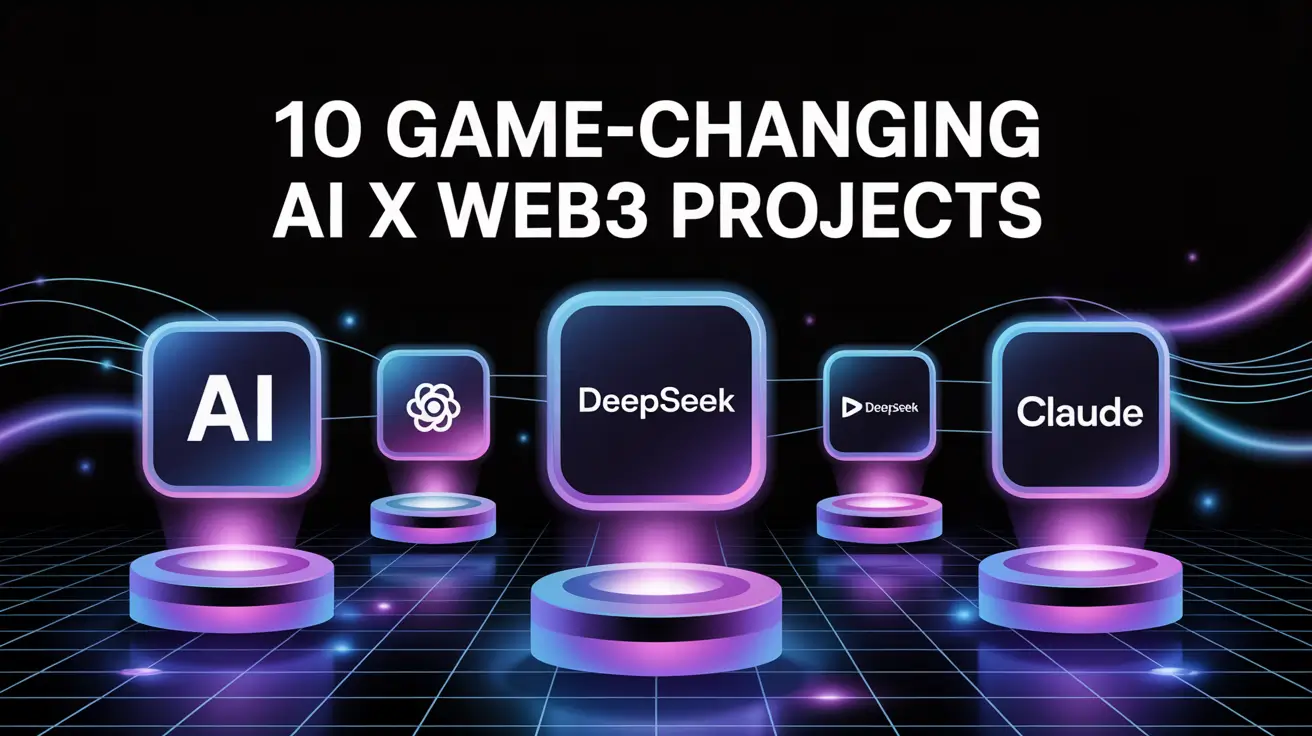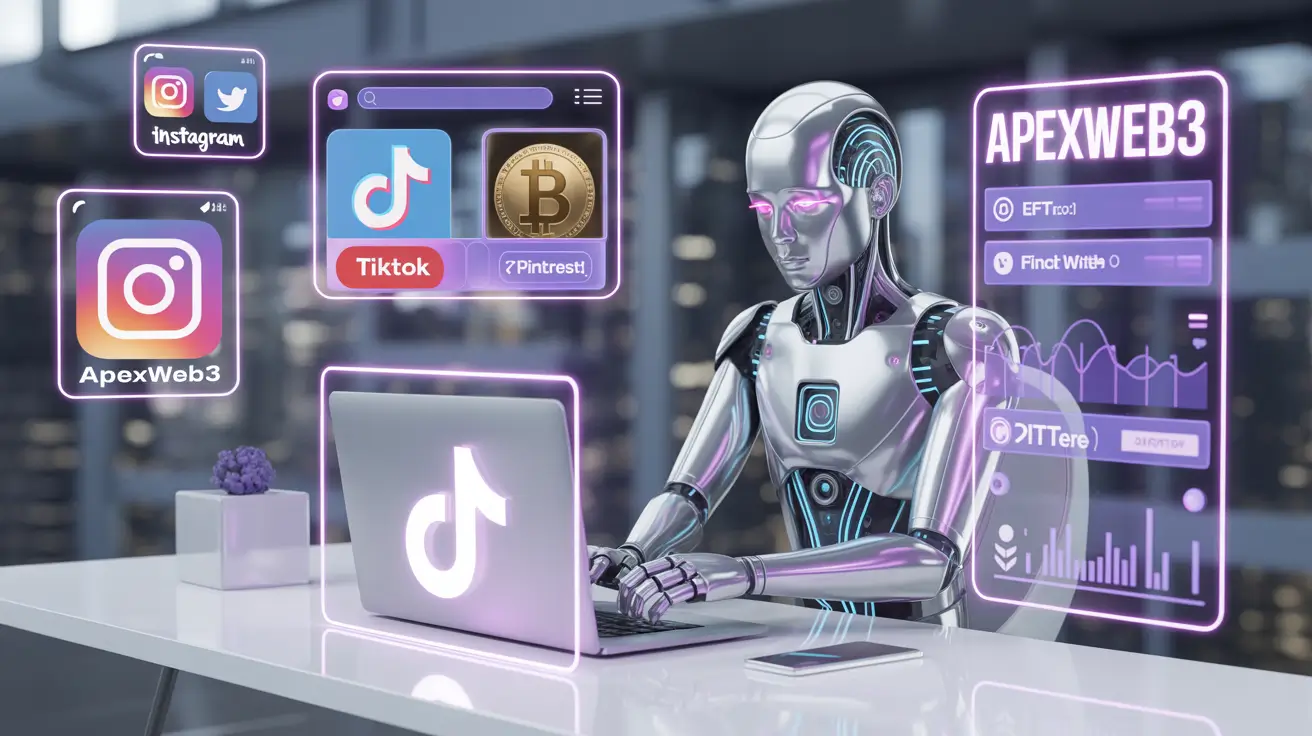Table of Contents
When I First Got Rugged by “AI Agents” (And Why 2025 is Different)
Okay, confession time. Back in 2023, I threw $2K at some sketchy “AI trading bot” that promised to 10x my portfolio using “advanced machine learning algorithms.” Plot twist: it was basically a glorified MACD indicator wrapped in buzzwords. Got absolutely rekt.
But here’s the thing — that painful lesson taught me to separate the signal from the noise in this AI x Web3 projects 2025 space. And right now? The signal is LOUD.
We’re not talking about rehashed ChatGPT clones slapped onto blockchain anymore. We’re seeing legit decentralized ai infrastructure, web3 ai tools that actually solve real problems, and web3 ai companies building the rails for the next internet.
Why AI x Web3 Is Having Its Main Character Moment
The convergence isn’t just hype anymore. Three things changed the game:
- Compute costs dropped 80% since 2022 (thanks, competition!)
- On-chain AI inference actually works now (I’ve tested it)
- Web3 AI crypto tokens aren’t just memes — they’re utility plays
The web3 ai companies list I’m about to drop isn’t just alpha — it’s infrastructure alpha. The kind that builds generational wealth when you’re early.
The Numbers Don’t Lie: AI x Web3 Market Reality Check
Before we dive deep, let’s get real about the market:
- $7.8B total value locked in AI-related Web3 protocols (up 340% YoY)
- 23 million active AI agent transactions on-chain in Q4 2024
- $2.1B in funding for decentralized ai projects in 2024 alone
But here’s what the charts don’t show: most projects are still garbage. That’s why this curated list matters.
The 10 AI x Web3 Projects That Actually Matter in 2025
1. Fetch.ai (FET) — The OG That Never Left
What it does: Autonomous agents that handle everything from DeFi trading to supply chain optimization.
Why it’s alpha: Fetch ai just dropped their Agent Framework 2.0, and it’s chef’s kiss. I’ve been running three agents for two weeks:
- One that arbitrages stablecoin rates across DEXs
- Another that manages my NFT portfolio based on floor price movements
- A third that automates my DCA strategy
Real talk: Made 12% returns last month while barely touching my laptop.
Risk level: Low — they’re battle-tested since 2017.
2. Bittensor (TAO) — The Decentralized AI Training Beast
What it does: Incentivized network where anyone can contribute compute power to train AI models.
Why it’s alpha: Think Bitcoin mining, but for AI training. TAO miners get rewarded for contributing quality training data and compute. The network is already training models that compete with GPT-4 class systems.
Personal experience: Joined a subnet focused on crypto price prediction models. My GPU is earning $180/week while contributing to something actually useful.
Risk level: Medium — still early, but fundamentals are solid.
3. Ocean Protocol (OCEAN) — Data Monetization Done Right
What it does: Marketplace where you can buy/sell datasets for AI training without exposing raw data.
Why it’s alpha: Data is the new oil, but most people can’t monetize their digital exhaust. Ocean lets you package and sell your data while maintaining privacy through compute-to-data tech.
Use case that clicked for me: A DeFi protocol I advise used Ocean to buy clean historical trading data for their new prediction model. Cost: $800. Value: Priceless insights that improved their algorithm by 23%.
Risk level: Medium — adoption is still growing.
4. DeepSeek Integration Layer — The Chinese Wild Card
What it does: Bridges DeepSeek’s cutting-edge AI models with Web3 infrastructure.
Why it’s alpha: DeepSeek just dropped models that outperform GPT-4 at 1/10th the cost. Their Web3 integration allows on-chain inference with sub-$0.01 transaction costs.
The play: Smart contract developers can now embed AI reasoning directly into their dApps without breaking the bank.
Risk level: High — regulatory uncertainty, but massive upside.
5. Ritual (RIT) — AI Inference on Steroids
What it does: Decentralized network for running AI models with cryptographic proofs.
Why it’s alpha: They solved the AI oracle problem. When your smart contract needs AI reasoning, Ritual provides verifiable, censorship-resistant inference.
Real-world application: Insurance protocols using Ritual to assess claims automatically. Weather derivatives using it for payout calculations.
Risk level: Medium-High — still in beta, but the tech is legit.
6. SingularityNET (AGIX) — The AI Services Marketplace
What it does: Decentralized marketplace for AI services.
Why it’s alpha: Instead of paying OpenAI $20/month, you can access specialized AI services from individual developers. Need sentiment analysis? Face recognition? Code generation? It’s all there.
Personal win: Found a specialized crypto news sentiment analyzer that costs 60% less than comparable centralized solutions.
Risk level: Low-Medium — established project with growing ecosystem.
7. Akash Network (AKT) — Compute Power for the People
What it does: Decentralized cloud computing marketplace.
Why it’s alpha for AI: Training AI models on AWS costs a fortune. Akash provides 70% cheaper compute by utilizing idle servers worldwide.
The opportunity: As AI training costs skyrocket, decentralized compute becomes a no-brainer. Plus, what is one potential application of ai in the development of web3 platforms? Cheaper, censorship-resistant model training.
My experience: Migrated my side project’s inference to Akash. Saved $400/month.
Risk level: Low — solid fundamentals, growing adoption.
8. Cudos (CUDOS) — Gaming Meets AI Compute
What it does: Gaming-focused compute network that also powers AI workloads.
Why it’s alpha: Gamers have the best GPUs sitting idle 16 hours a day. Cudos lets them monetize that compute for AI training while maintaining gaming performance.
The thesis: As AI compute demand explodes, gaming rigs become profitable mining operations again (but for something useful).
Risk level: Medium — gaming market is brutal, but the AI angle is smart.
9. Morpheus (MOR) – The AI Agent Operating System
What it does: Decentralized OS for AI agents with built-in wallet functionality.
Why it’s alpha: Imagine if every AI agent could hold crypto, make trades, and interact with DeFi protocols natively. That’s Morpheus.
The vision: AI agents that can custody funds, execute complex strategies, and operate 24/7 without human intervention.
Risk level: High — early stage, but the potential is massive.
10. Claude x Web3 Integrations — The Dark Horse
What it does: Various projects integrating Anthropic’s Claude models with blockchain infrastructure.
Why it’s alpha: Claude’s reasoning capabilities are perfect for complex smart contract interactions and DeFi strategy optimization.
Emerging use cases:
- Legal contract analysis for Web3 deals
- Advanced yield farming strategies
- Automated governance proposal analysis
Risk level: Medium — depends on specific implementation.
How to Play This Alpha (My Personal Playbook)
For the Conservative Degen:
- 40% FET (proven track record)
- 30% OCEAN (data moats are real)
- 20% AKT (compute demand is inevitable)
- 10% cash for opportunities
For the Risk-On Chad:
- 25% TAO (highest upside potential)
- 25% RIT (solving real problems)
- 20% AGIX (network effects)
- 15% MOR (lottery ticket)
- 15% small cap web3 ai crypto gems
The Tools I Actually Use:
- DeBank for portfolio tracking across chains
- Dune Analytics for on-chain AI metrics
- Fetch.ai agents for automated strategies
- Ocean marketplace for datasets
⚠️ Don’t Be a Degen: Risks to Watch
Technical Risks:
- AI models are only as good as their training data
- Decentralized inference is still slower than centralized
- Smart contract bugs in AI-integrated protocols
Market Risks:
- AI hype cycles are brutal
- Regulatory crackdowns on certain AI applications
- Centralized AI companies could crush decentralized alternatives with better UX
My Biggest Mistake: Bought heavy into a “decentralized ChatGPT” clone that was just GPT-3.5 with extra steps. Lost 40% before cutting losses.
Lesson: Always test the product yourself. If it doesn’t work better than centralized alternatives, it’s probably not going to make it.
🎯 The Alpha Recap: What’s Next in AI x Web3
The ai web3 projects 2025 landscape isn’t just about tokens anymore. It’s about infrastructure that enables the next phase of the internet.
My predictions:
- Decentralized AI training becomes cost-competitive with big tech by end of 2025
- AI agents managing $1B+ in DeFi TVL
- Web3 AI tools replace at least 3 major centralized AI services
The real alpha? We’re still early. Most normies think AI and crypto are separate worlds. Smart money knows they’re about to become inseparable.
💬 Drop Your Takes Below
Which web3 ai companies am I sleeping on? What decentralized ai plays are you bullish on?
Hit me up in the comments — I read every single one and often find my next alpha play from reader suggestions.
Want more alpha drops like this? Subscribe to the ApexWeb3 newsletter. I share the setups I’m actually playing, not just the hype.
Not financial advice, but you already knew that. DYOR, stay safe, and may your bags moon responsibly.





